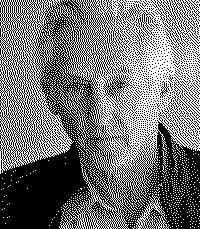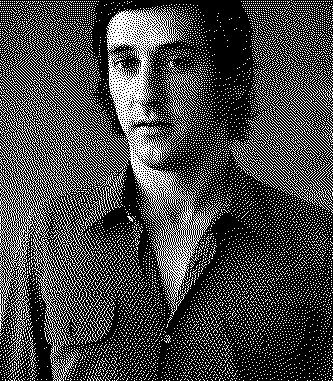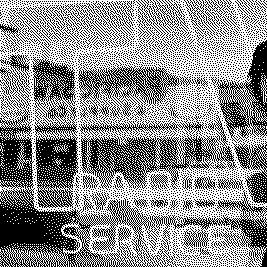Artists/Ed Ruscha
Fast Facts
Text and Typography
A hallmark of Ruscha's art is his innovative use of text and typography. He often incorporates words and phrases into his paintings and prints, using various fonts and scales. These textual elements are not just additions but central components of the composition, often carrying a visual impact as strong as the imagery.
Influence on Pop Art
Ruscha's work is often associated with the Pop Art movement, and he has been influential in bridging the gap between visual and verbal language in art. His work plays with the interplay of text and image, often exploring themes of consumerism and communication.Quintessential 1960s/1970s cool
Medium and Technique Variety
Ruscha is not limited to one medium; his oeuvre includes painting, drawing, printmaking, and photography. He often experiments with materials, using unconventional substances like gunpowder, fruit and vegetable juices, and even blood in his work.
Photobooks
Ruscha is also known for his innovative photobooks, which have become iconic in the art of photography. Books like "Twentysix Gasoline Stations" (1963) and "Every Building on the Sunset Strip" (1966) are pioneering works in the artist's book genre. These photobooks often present mundane subjects in a deadpan manner, challenging traditional notions of what constitutes art.
Biography



Ed Ruscha, born December 16, 1937, in Omaha, Nebraska, and raised in Oklahoma City, is a prominent figure associated with the West Coast Pop Art movement. His body of work, which includes painting, printmaking, drawing, photography, and film, provides a unique perspective on American culture, blending the visual with the verbal in innovative ways
After moving to Los Angeles in 1956, Ruscha attended the Chouinard Art Institute (now CalArts), where his exposure to the vibrant local scene, including hot-rod culture and progressive jazz, deeply influenced his artistic direction (Encyclopedia Britannica) (The Art Story).
Ruscha's early career was marked by his fascination with the vernacular landscapes of Southern California and the Hollywood film industry. His projects like "Every Building on the Sunset Strip" (1966) and paintings such as "Standard Station" (1963) and "Hollywood" (1982) showcase his interest in commercial graphics, popular culture, and the distinctive visual language of Los Angeles. The influence of the film industry is evident in works like "Large Trademark with Eight Spotlights" (1962), which depicts the 20th Century Fox logo, and "The End" (1991), a nod to classic film closings (Wikipedia).
Ruscha's innovative use of words and typography has been a central aspect of his work, beginning with his first word paintings in 1961. His exploration of language through painting and drawing often features satirical sayings and phrases alluding to life in LA. His approach reflects a broader movement among artists of his generation, who began to use phrases and full sentences in their works, marking a shift in the post-Pop Art era (Wikipedia). This interest in words extended to his experimentation with unusual materials, including food items like coffee, egg white, mustard, and cheddar cheese, as seen in works like "Dance?" (1972). These pieces not only showcase Ruscha's unique medium choices but also reflect his deep engagement with American culture and consumerism (The Art Story).
Throughout his career, Ruscha has continued to evolve, delving into abstract themes and experimenting with landscape and text. His "Metro Plots" series and works like "Pay Nothing Until April" (2003) highlight his ongoing exploration of the relationship between text and image, inviting viewers to contemplate the connections between everyday phrases and broader themes of nature and advertising (Wikipedia) (The Art Story).
Ruscha's contribution to art extends beyond his own creations. His influence is seen in the way he has inspired a younger generation of artists, particularly through his artist's books and short films. His ability to blend high and low culture, and to find beauty in the everyday, has cemented his position as a key figure in contemporary art (Encyclopedia Britannica) (The Art Story).
Bodies of Work
-

26 Gas Stations
-

Every Building on the Sunset Strip
-

Thirtyfour Parking Lots in Los Angeles
1967
-

Nine Swimming Pools and a Broken Glass
-

Stains
-

Text Paintings (1960s-present)
-

1960s Text Paintings
-

Liquid Texts (1960s, 1970s)
-

1970s Text Paintings
-

Ribbon Texts (1970s)
-

Flags (1970s)
-

1980s Text Paintings
-

City Lights Texts (1980s)
-

Silhouettes (1980s)
-

1990s Text Paintings
-

Mountain Texts (1990s-present)
-

2000s Text Paintings
-

2010s Text Paintings
-

Extremes and In Betweens
-

Standard Oil
-

Hollywood Sign
-

Course of Empire
-

Rusty Signs
2014
-

Vowels
-

Psycho Spaghetti Westerns
2011
-

Spied Upon Scene
2017
-

Dedication Stones
-

Tom Sawyer Paintings
Importance
Ed Ruscha's importance in the art world is profound, highlighting his unique contributions to contemporary art, particularly within the context of American culture and the landscape of Los Angeles. His work embodies a blend of visual artistry and linguistic exploration, making significant impacts in several areas:
Pioneer of Conceptual Art
Ruscha's work is emblematic of the conceptual art movement. He is known for his use of typography and incorporation of words and phrases into visual art, which bridges the gap between verbal language and visual imagery. This approach has made him a pivotal figure in the dialogue between text and image within contemporary art.
Influence from the Hollywood Film Industry
Ruscha's art is deeply influenced by the Hollywood film industry, with works like "Large Trademark with Eight Spotlights" (1962) directly referencing Hollywood's iconic imagery such as the 20th Century Fox logo. His art reflects the influence of cinematic techniques and the visual culture of Los Angeles, creating a unique commentary on the city's landscape and its global cultural export—cinema (The Art Story) (Wikipedia).
Exploration of Everyday Life and Consumer Culture
Through works like "Every Building on the Sunset Strip" (1966), Ruscha explores the everyday aspects of American life, particularly focusing on the urban landscape and architectural elements of Los Angeles. His work captures the mundane in a way that elevates it to the subject of fine art, offering a new perspective on the ordinary aspects of American culture (The Art Story).
Artistic Innovation and Technique
Ruscha's innovative use of materials and techniques, such as his "liquid word" paintings and the use of trompe l'oeil to create illusionistic representations of words as three-dimensional objects, showcases his experimental approach to art-making. His exploration of different mediums and styles has contributed to his reputation as a versatile and inventive artist (Wikipedia).
Impact on Pop Art and Beyond
While often associated with the Pop Art movement, Ruscha's work transcends easy categorization, embodying elements of both pop culture and fine art. His influence extends to a range of artistic movements and practices, making him a significant figure not only in Pop Art but in the broader context of contemporary art history.
Technique
Ed Ruscha's artistic technique is characterized by his innovative use of various media, his exploration of the interplay between text and image, and his reflections on the American landscape, particularly focusing on Los Angeles and its urban environment.
Typography and Words as Primary Subjects
Ruscha's fascination with typography and the visual form of words has been a constant in his work. He often isolates monosyllables or phrases against solid backgrounds, turning words into visual art forms in their own right. This technique bridges the gap between text and image, making language the focal point of the visual experience (Wikipedia).
Commercial Art Techniques
Drawing on his background in commercial art, Ruscha has employed techniques such as photo offsetting and typesetting in his projects. This approach allows him to produce works that have a polished, professional quality, which contrasts with the often mundane or everyday subjects he chooses to depict (The Art Story).
Use of Unconventional Materials
Ruscha has experimented with a wide range of materials, including gunpowder, various liquids (to create "liquid word" paintings), and even food products. These materials are used to create textured, often three-dimensional effects that give life to his textual subjects, playing with the form and substance of language in a very literal sense (Wikipedia).
Incorporation of Popular Culture and Urban Landscapes
Much of Ruscha's work is a reflection on the urban landscape of Los Angeles and the omnipresence of Hollywood culture. He incorporates elements of commercial graphics, advertising, and cinematic imagery into his work, exploring how these elements shape the visual and cultural landscape of the city (The Art Story) (Wikipedia).
Photographic Documentation
Ruscha's technique extends into the realm of photography, where he has documented urban environments in works such as "Every Building on the Sunset Strip." This work, an accordion-style book that unfolds to reveal photographs of buildings along Los Angeles's Sunset Strip, showcases Ruscha's interest in the documentary potential of photography and its ability to capture the ephemeral aspects of urban life (The Art Story).
* photography and its ability to capture the ephemeral aspects of urban life (The Art Story). * Abstract Representation and Aerial Views
In later works, such as the "City Lights" paintings and "Metro Plots" series, Ruscha uses abstract representations and aerial views to map out the cityscape of Los Angeles. These works play with perspective and scale, offering a stylized view of the city that is both detailed and abstract (Wikipedia).


